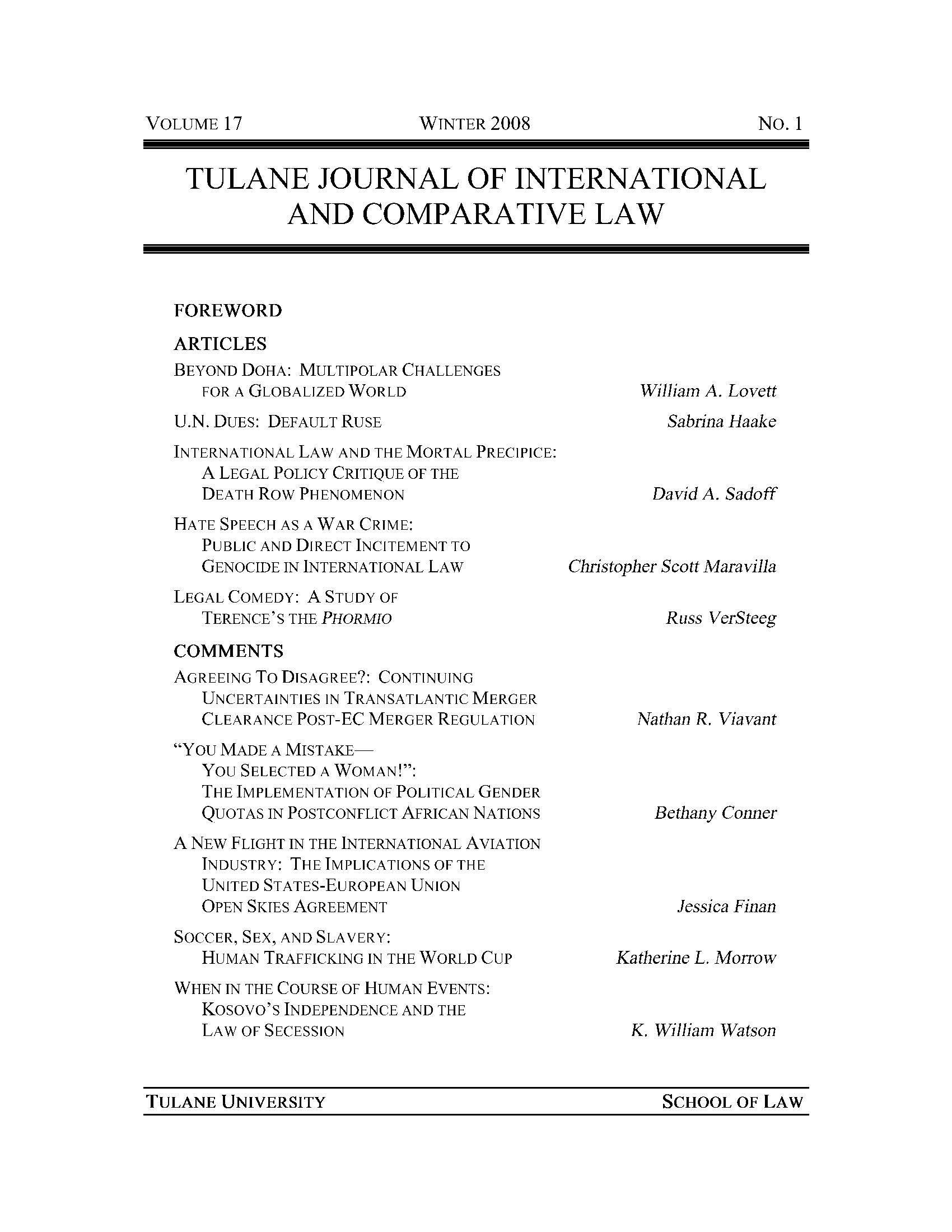Soccer, Sex, and Slavery: Human Trafficking in the World Cup
Abstract
40,000 women will be trafficked into Germany to accommodate fans
attending the FIFA World Cup to be held there in the summer of 2006.1
During and prior to the Fédération Internationale de Football
Association (FIFA) World Cup in Germany, the media embraced this dire
estimate of the darker side of fandom.2 The European Union,
international organizations, and nongovernmental organizations (NGOs)
all shared their concerns.3 Pimps and traffickers were expected to follow
the high-income opportunity made available by the World Cup.4 Instead,
after the tournament, Germany reported no increase in human trafficking
or forced prostitution.5 The German Government, NGOs, and
international organizations had implemented preventative and protective
measures specifically structured to the 2006 World Cup.6 They
encouraged increased issue awareness, set up telephone lines for
reporting trafficking cases, strengthened border patrol, and increased and
improved police involvement and information sharing.7 It has been
suggested that these measures offer an “effective model for future, largescale
international sporting events.”8 This Comment explores the
possible relation between human trafficking and the World Cup and
focuses on the sudden takeover of the 40,000 figure, with an eye toward
the 2010 World Cup to be held in South Africa.
